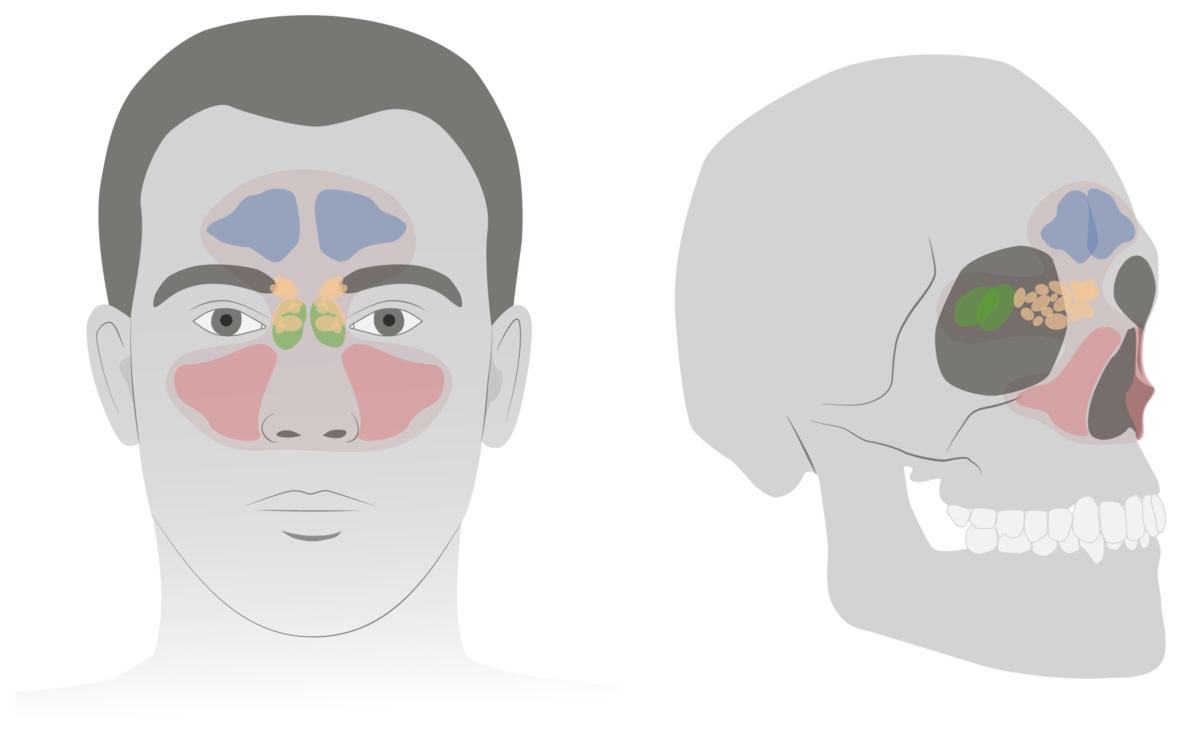The 4 pair of paranasal sinuses include the maxillary, ethmoid, sphenoid, and frontal Frontal The bone that forms the frontal aspect of the skull. Its flat part forms the forehead, articulating inferiorly with the nasal bone and the cheek bone on each side of the face. Skull: Anatomy sinuses. The sinuses are a group of air-filled cavities located within the facial and cranial skeleton; all are connected to the main nasal cavity Nasal cavity The proximal portion of the respiratory passages on either side of the nasal septum. Nasal cavities, extending from the nares to the nasopharynx, are lined with ciliated nasal mucosa. Nose Anatomy (External & Internal) and nasopharynx Nasopharynx The top portion of the pharynx situated posterior to the nose and superior to the soft palate. The nasopharynx is the posterior extension of the nasal cavities and has a respiratory function. Pharynx: Anatomy. Functions include contributing to voice resonance, reducing the skull Skull The skull (cranium) is the skeletal structure of the head supporting the face and forming a protective cavity for the brain. The skull consists of 22 bones divided into the viscerocranium (facial skeleton) and the neurocranium. Skull: Anatomy weight to facilitate an upright head position, conditioning (warming and humidifying) inhaled air, and maximizing the surface of the nasal mucosa Nasal mucosa The mucous lining of the nasal cavity, including lining of the nostril (vestibule) and the olfactory mucosa. Nasal mucosa consists of ciliated cells, goblet cells, brush cells, small granule cells, basal cells (stem cells) and glands containing both mucous and serous cells. Nose Anatomy (External & Internal).
Last updated: Nov 19, 2024

The maxillary sinuses (pink) are pyramid-shaped sinuses within the cheeks.
Image by Lecturio.
The frontal sinuses (blue) are irregularly shaped sinuses above the orbital cavities.
Image by Lecturio.
The ethmoid sinuses (yellow) are thin-walled sinuses medial to the optic cavities.
Image by Lecturio.
The sphenoidal sinuses (green) are located posterior to the ethmoid sinuses (yellow).
Image by Lecturio.